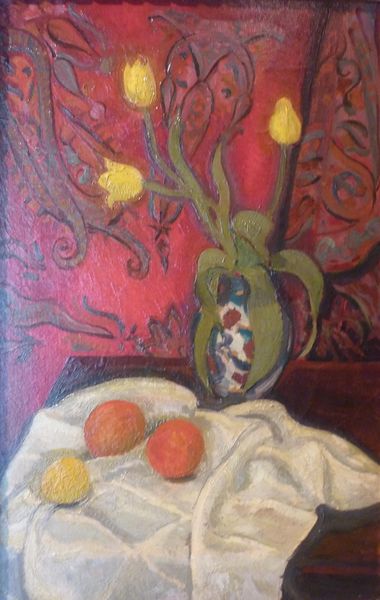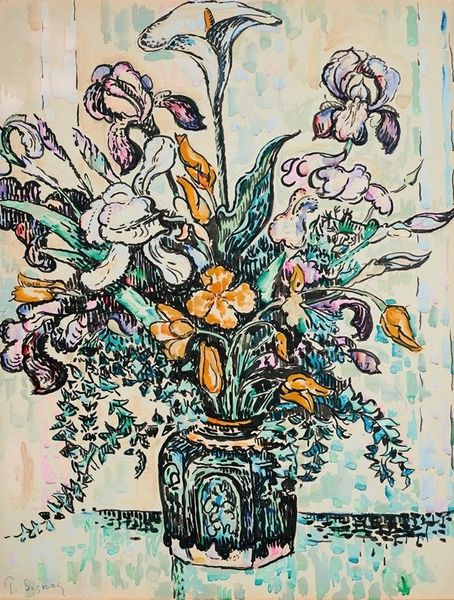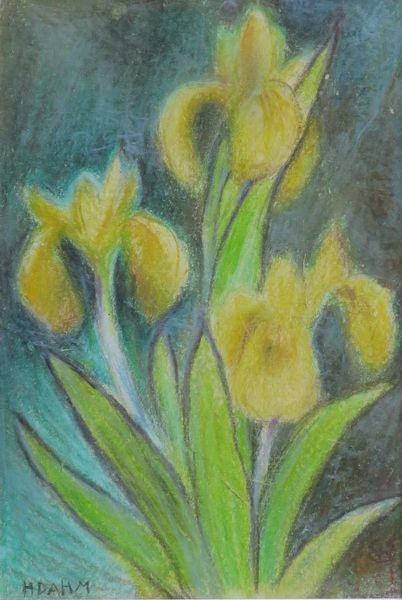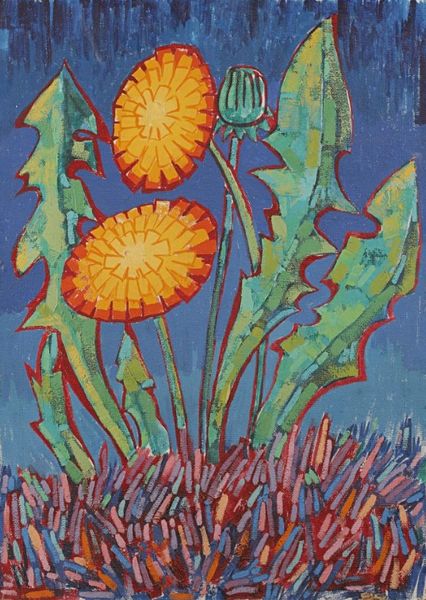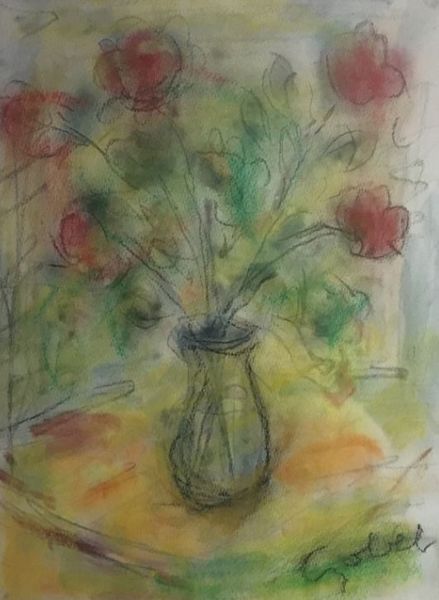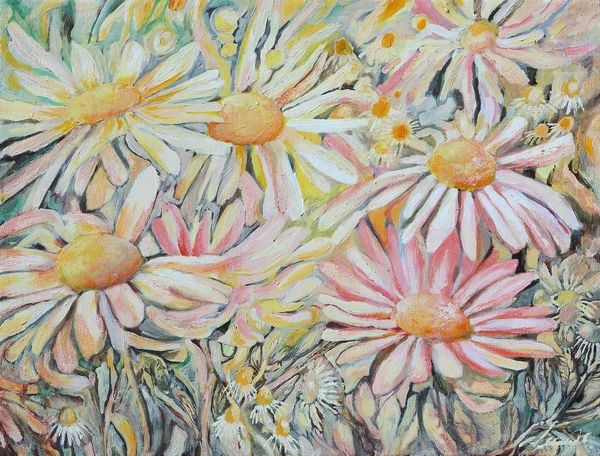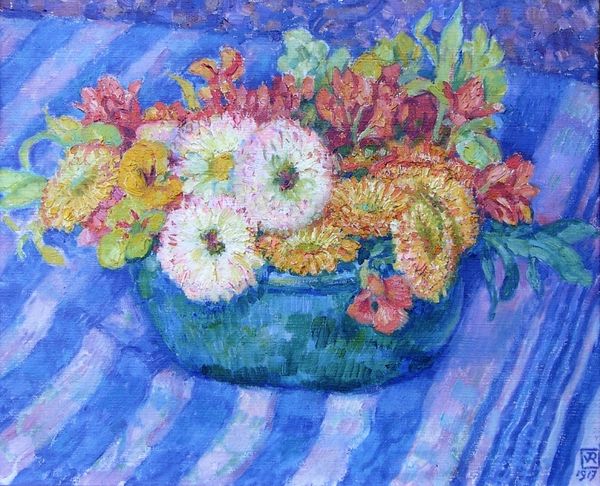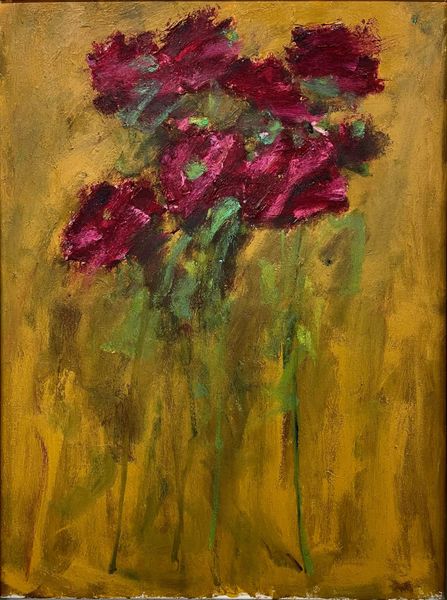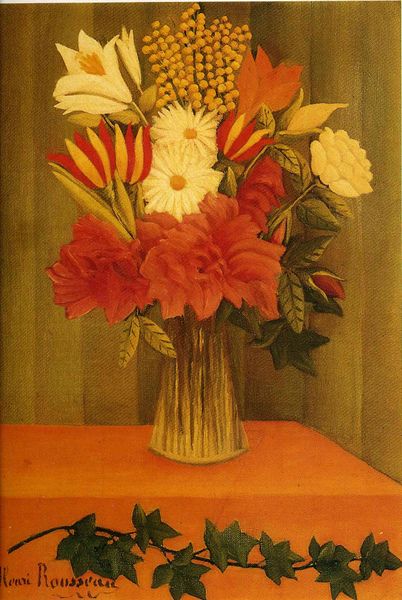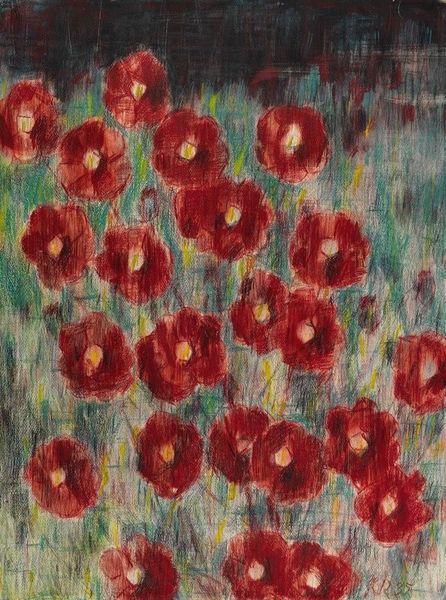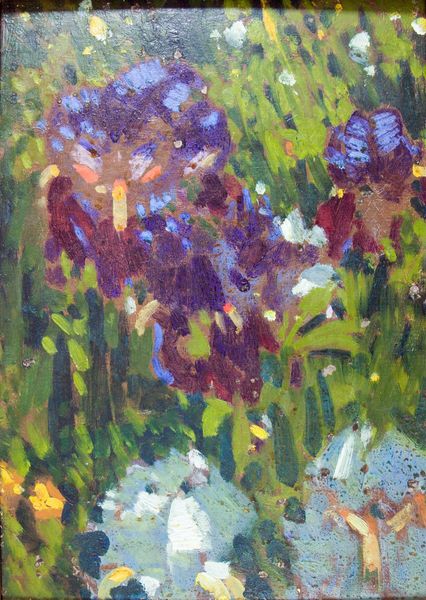
Copyright: Helen Dahm,Fair Use
Curator: Helen Dahm’s "Blumenstilleben," painted in 1954, presents us with an interesting subject for our discussion. Editor: It certainly does. My first impression is of dense, almost oppressive vegetation rendered in a distinctly material fashion. The paint seems applied in thick, tactile layers. Curator: Indeed. The impasto application of gouache speaks to the Expressionist style Dahm was known for. Considering her involvement with the feminist art movement later in her career, I see an echo here of challenging traditional still-life depictions. The floral arrangement almost aggressively takes up space. Editor: Absolutely. Looking closer, you really sense the hand of the artist. The materiality itself—the texture and the sheer physicality of the gouache—becomes central. It’s not just a pretty picture, but rather an examination of the very stuff that constitutes art, its labour. Dahm emphasizes production rather than consumption, the process not the object. Curator: And her position as a woman artist further enriches the discussion. Throughout art history, floral still lifes were a typical, 'safe' subject matter for female artists, Dahm’s rendering disrupts any expectations of delicacy. It boldly reclaims the genre. The rather subdued colour palette even challenges the traditional feminine association of flowers. Editor: The thick application does seem almost to resist elegance. It makes me think about where the materials came from, her relationship with making and with labor. Gouache production is a distinct and intensive industry—who were those laborers and how did that context influence this choice of paint? Curator: A great point. Dahm's lifelong commitment to social justice, stemming from her involvement with the Bruderhof community, underscores her radical intent. She seems to me to be using the materiality as a form of embodied expression, challenging the social constraints of her time through her choice of medium and execution. Editor: Thinking about those production lines gives me pause in consideration of consumption as a primary interaction with artworks like these. Blumenstilleben certainly reminds me to critically consider that engagement and my own reaction as part of the wider world it emerged from. Curator: Well, Dahm’s "Blumenstilleben" does much more than just represent flowers. Editor: Yes, I appreciate how it pushes viewers to confront the tangible realities and labor underlying the very art we admire.
Comments
No comments
Be the first to comment and join the conversation on the ultimate creative platform.
